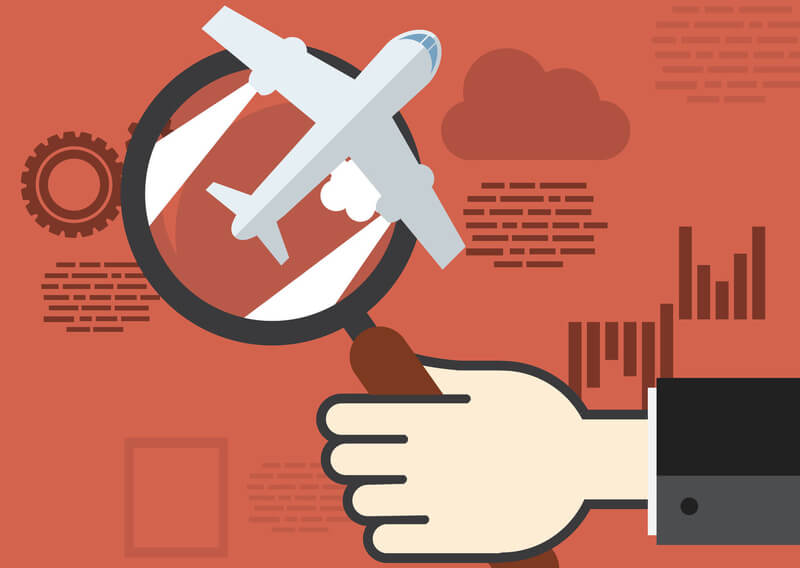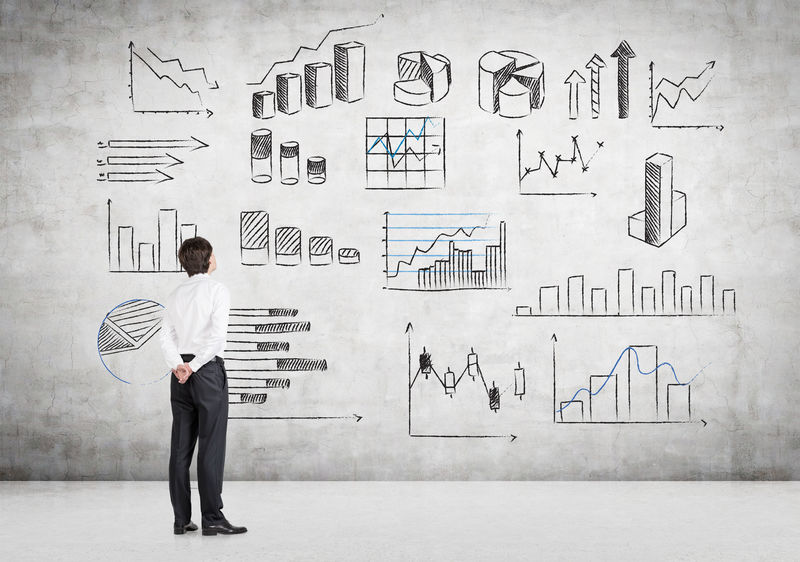
Airlines are turning to data analytics to reduce fuel consumption at different stages of flight and pilots can even make peer comparison to achieve better fuel efficiency.
The world is becoming more data-driven. Most companies understand that if they capture data that streams into their businesses, they can get significant value from data by applying analytics. Companies are therefore evolving their cultures in a more data-oriented direction and adjusting their strategies to emphasise data and analytics. Data is not restricted to the marketing and e-commerce sectors.
In a study conducted by the MIT Centre for Digital Business, companies that were mostly data-driven were found to have 4% higher productivity and 6% higher profits than the average. Analytical decisions and actions continue to be generally superior to those based on intuition and experience.
“It is a capital mistake to theorise before one has data” - Sir Arthur Canon Doyle in Sherlock Holmes
However, most companies are in the early stages of managing their data. Implementing analytics successfully isn’t a simple process. It takes time and effort to create the correct data structures and technical infrastructure to enable effective analysis. Companies can start small to gain experience from smaller projects which will create a solid foundation to move onto bigger and more complex projects.
In Malaysia, the Government rolled out a roadmap in 2015 to promote adoption of big data analytics in private and public sectors. Its implementation is spearheaded by the Malaysia Digital Economy Corporation (MDEC). Among MDEC’s efforts is to conduct training for data professionals. It aims to train 20,000 data professionals by 2020. Recently, the Ministry of International Trade and Industry rolled out Industry4WRD, a national policy on Industry 4.0 to drive digital transformation of manufacturing and related service sectors in Malaysia.

Data analytics can determine and forecast demand and specifically, which product and when does demand peak, thus enabling better management of inventory.
Data Analytics Identify Problem Areas
With the right analytics, companies can zero in on every segment of the process and examine supply chains in minute detail, accounting for individual activities and tasks. Companies can identify bottlenecks and reveal underperforming processes and components and make the necessary improvements.
“The most dangerous kind of waste is the waste we do not recognise” - Shigeo Shingo
Generally, the following are steps that companies should take to identify problem areas:
- Decide which business process to measure (or which parts if it is a big process)
- Map out business processes, and understand it step by step
- At each step, create a list of measurements based on the type of measure (for example – time taken, amount of rework, number of failures) and consider if the measurements reflect that part of the business process
- Measure what goes on at every step of a business process
- Analyse collected data and use that analysis to strategise improving processes
- Implement improvements in place and measure again
Companies must make sure to measure the right thing, if they want to make the most use of data and arrive at useful insights. Ideally, measurements should be automated as much as possible to avoid natural human error. The hardware should be attached to sensors to measure and transmit data automatically into an attached software.
For example, AirAsia uses analytics to reduce its fuel consumption. It uses a digital tool called FlightPulse developed by GE Aviation. Pilots can see first-hand, the amount of fuel used at different stages of flight. Pilots then make a peer comparison and work towards fuel savings to reduce cost. Various techniques can be employed to save fuel, like shutting down an unneeded engine while taxiing to the gate after landing (this action can shave 10 kilograms of fuel per minute). Air Asia was able to reduce fuel consumption by 1% in the year. After collecting the required data, companies should look at trends in the process over time and how it performs at different times.
Companies must test how the process performs with different inputs and outputs. Companies need to be creative in finding ways to capture a sustainable competitive advantage. For example, a chemical manufacturing company used neural-network techniques to measure and compare the relative impact of different production inputs on yield. By resetting its parameters accordingly, the chemical company was able to reduce its waste of raw materials by 20% and its energy costs by around 15%, thereby improving overall yield.

Analytics help companies to predict and determine early red flags in business strategies and become more risk intelligent.
Data Analytics Improve Planning and Operations
Analytics helps in different areas of planning and forecasting. With proper algorithms, it allows on-time planning to suit live updated conditions. For example, in routing and transportation, UPS, a private American postal service, uses big data to design route structures using a proprietary system called ORION (On-road Integrated Optimization and Navigation). The system uses advanced algorithms to create optimal routes for delivery drivers from data supplied by customers, drivers and vehicles. It can alter routes on the fly based on changing weather conditions or accidents. It looks at the deliveries that still need to be completed and continue to optimise the routes. UPS managed to reduce its delivery miles by 100 million and realised significant savings.
Companies can more accurately detect maintenance needs and identify risks, thereby reducing unnecessary maintenance, increasing asset utilisation and operational reliability. For example, AirAsia uses analytics for preventive and predictive maintenance. Its entire fleet is equipped with FOMAX, an on-board data-capture/ transmission module, which collects aircraft maintenance and performance data, and automatically transmits it to ground-based operations in near-real-time. It also subscribes to Airbus' Skywise Core, a cloud-based environment for airlines to share their data with Airbus. With the data provided, Airbus performs advanced predictive modelling to predict upcoming system failures. Airbus transmits the insights for AirAsia to make maintenance decisions of its choosing. The more data that is shared with Skywise, the more accurate predictions and models will be.
Analytics also helps to forecast demand more accurately so that companies can cope better with demand. Companies can judge the type of products, the quantity and the time at which products are in demand and prepare its production. It can predict with different anomalies such as weather and consider current changing consumers behaviour. Here is the difference with traditional forecasting. Companies can also use the information to help their customers plan so that it is able to cope with demand and better meet their needs.
Take Grab as an example. It targets “peak shifting”; it wants customers to get a ride when they want it and at a price they want. Through data collected and as transport demand can be lumpy, Grab noticed a seasonality to demand and supply. At certain times and days, imbalances appear, peak and disappear, and the process repeats itself. Grab currently uses a widget to display aggregated data to customers in easily interpreted visualisations, so that they can plan to leave at times when there is more supply, and with potentially more savings for fares.

Data analytics will allow companies to determine their pain points, identify bottlenecks and work on improving the business.
Data Analytics Improve Decision Making
Companies need to make faster and better-quality decisions in today's competitive and fast-paced landscape. Decisions must also be made with full information and extensive consideration of possible alternatives. Using analytics, data can be processed quicker with the right software than using traditional Excel, which reduces time to insights. By becoming more risk intelligent, companies will be more adept at dealing with uncertainty and be strategic at decision making. Better and faster insights also allow red flags to be identified early, such as why a business strategy is not working as well as planned and allows for corrective actions to be taken.
It is also common for organisations without big data analytics capabilities to work in silos. Each department often report their own matrices without providing the full context of information. The core idea of analytics is that data is drawn from various sources for analysis. There is a unification of data which breaks down the internal silos. It improves collaboration between departments and the speed of getting data insights. Silos are unhealthy because it erodes teamwork and collaboration; it does not help people consider the full picture. Companies need to transcend these silos in the interest of customer needs and company growth.
Data is undeniably powerful. Analytics is ultimately about making the best possible use of information to make the best possible decision. Better experiences, consistent quality and lower costs. The ability to use data represents a real and essential competitive advantage in today's digitised economy. It allows companies to learn from the past and prepare for the future. It is best to start by identifying high-value opportunities, which is capturing the “low hanging fruit” to build a smarter tomorrow.
Contribution by:
Jeanne Kuah is the founder and CEO of a data analytics and strategy development consulting firm. Her passion is to create a smarter tomorrow. To find out more, visit www.letolleconsulting.com.
References
Air & Cosmos International, Air Asia embraces big data analytics, http://www.aircosmosinternational.com/airasia-embraces-big-data-analytics-107167, published 13 February 2018
Forbes, The Brilliant Ways UPS uses artificial intelligence, machine learning and big data, https://www.forbes.com/sites/bernardmarr/2018/06/15/the-brilliant-ways-ups-uses-artificial-intelligence-machine-learning-and-big-data/#3280f2b35e6d, published 15 June 2018
Grab, Recipe for Building a Widget: How we helped to "Peak-Shift" demand by helping passengers understand travel trends, https://engineering.grab.com/peak-shift-demand-travel-trends, published 7 March 2019
Information Age, Using data analytics improve business process waste, https://www.information-age.com/using-data-analytics-improve-business-process-waste-123464115/, published 23 January 2017
JAXenter, Understanding the relationship between IoT and Big Data, https://jaxenter.com/relationship-between-iot-big-data-138220.html, published 18 October 2017
McKinsey, How big data can improve manufacturing, https://www.mckinsey.com/business-functions/operations/our-insights/how-big-data-can-improve-manufacturing, published July 2014




